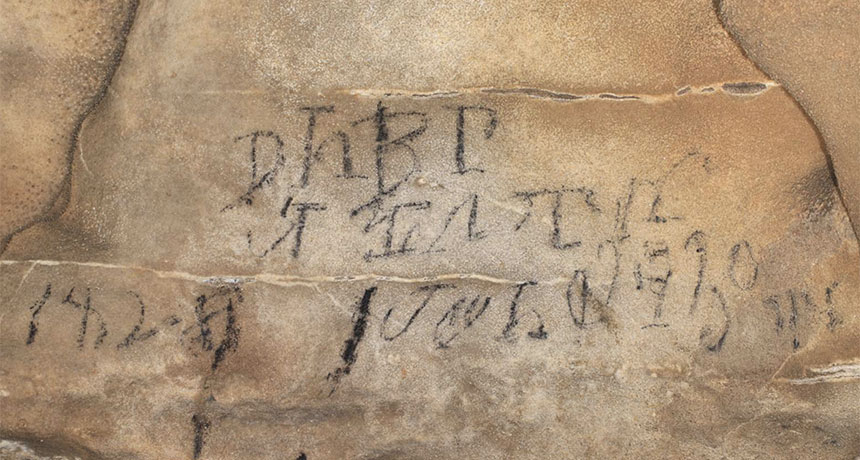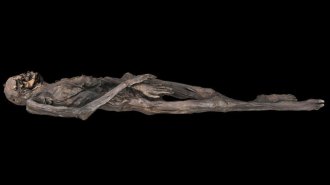Newly translated Cherokee cave writings reveal sacred messages
The inscriptions were found in Manitou Cave in Alabama

TEAM SPIRIT A Cherokee inscription inside an Alabama cave likely refers to rituals conducted in 1828 before a spiritually significant athletic contest similar to modern-day lacrosse, researchers say.
A. Cressler, B.D. Carroll et al/Antiquity 2019







